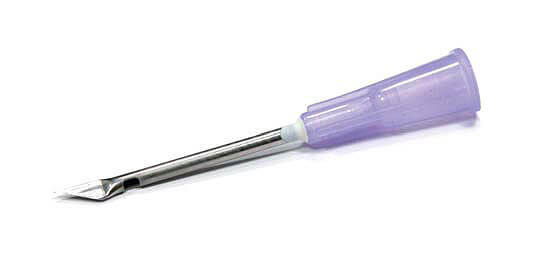When it comes to acne scars, there are a variety of types that can appear on the skin. One common type of acne scar is the rolling scar, which has a concave-convex appearance with a wave-like shape. This type of scar is caused by the proliferation of fibrous tissue in the real skin layer due to serious inflammation during an acne breakout. The fibrous tissue generates a pulling force, which causes the skin to become depressed, resulting in the rolling scar. In LM SKINCENTRE Hong Kong, we utilize subcision as a tool to treat these rolling scar.
Fortunately, LM SKINCENTRE provides a treatment called Subcision that can effectively improve the shape of a rolling acne scar. This procedure involves using a Nokor needle to remove the pulled fibrous tissue before laser treatment. At our center, we use the Nokor needle for treatment, which cuts through the fibrous tissue and brings the depressed scars back to the surface level. After the Subcision procedure, there may be some bruising, which typically fades within a few days.
What Is Subcision and How Does It Work?
Subcision, a term synonymous with subcutaneous incisionaless surgery, is a revolutionary minor surgical technique designed to treat various depressed acne scar. Subcision is a specialized procedure performed using a specific Nokor needle. This needle is inserted through a small puncture in the skin, employing its sharp edge to sever fibrotic strands that anchor the scar to underlying tissues. The procedure not only releases these strands but also stimulates collagen production during the wound healing process, resulting in significant cosmetic enhancement of the scar.
Key Indications for Subcision
The application of subcision varies based on the scar’s type, location, and severity. It’s particularly effective for:
- Depressed distensible scars resulting from acne, trauma, or surgery.
- Bound down scars from acne, varicella, or surgical procedures.
- Depressed skin grafts, wrinkles, and cellulite dimples.
Contraindications to Consider
Subcision might not be suitable for:
Patients with hypertrophic or keloid scars.
Patients with active bacterial or viral infections.
What is the Subcision Procedure
The procedure involves:
Cleansing and marking the area.
Application of numbing cream.
Local anesthesia administration.
Insertion and maneuvering of a special needle to release fibrous bands.
What is the post-procedural care
Keep the needle insertion site clean for 24 hours. Avoid alcohol, strenuous exercise in the coming 24 hours and avoid UV light for the coming 1 week.
How many sessions do I need?
The number of treatments varies, generally ranging from one to four sessions, depending on individual severity of scarring.
Potential Complications and Combined Treatments
While generally safe, subcision carries risks such as hematoma, pain, and possible scar formation. It can be effectively combined with treatments like morpheus8, dermapen, TCA CROSS, fraxel and fractional co2 laser.

